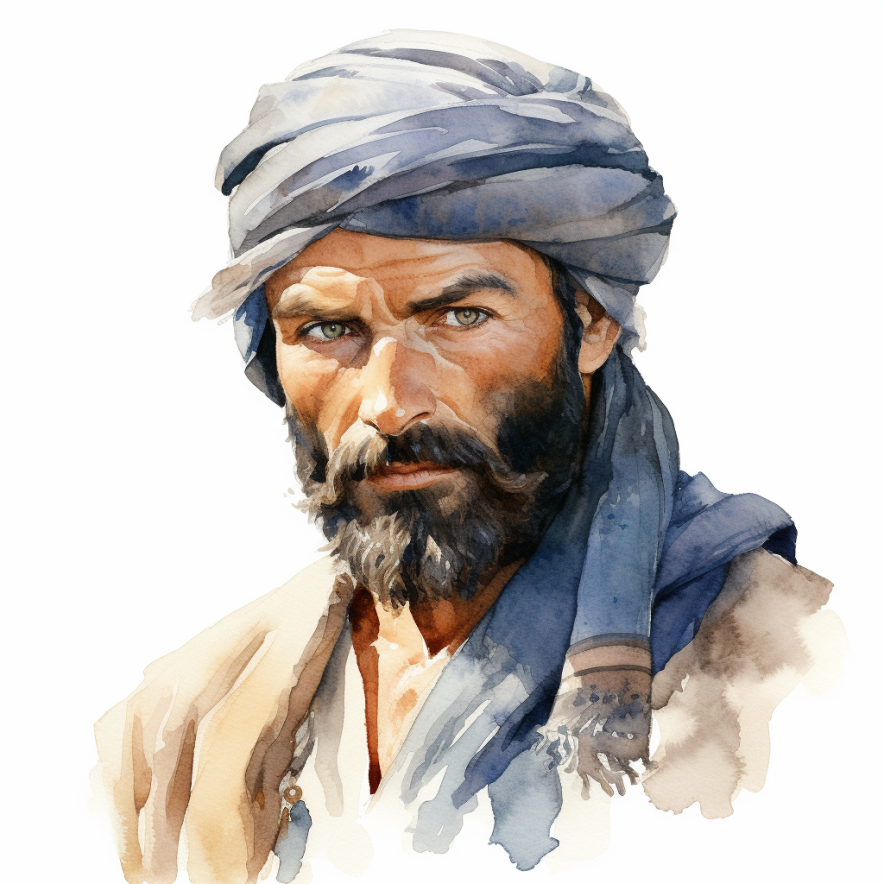
Ibn Battuta, the tireless traveler
The Epic Departure (1325)
Ibn Battuta, this name resonates like a melody in the world of exploration. Born in 1304 in Tangier, Morocco, he was destined for an extraordinary fate. His journey began modestly in 1325 with the intention of undertaking a simple pilgrimage to Mecca, but it quickly transformed into an epic that would take him across three continents. It's the kind of story that makes you want to set off on an adventure. So, fasten your seatbelts and follow us in the footsteps of this intrepid traveler.

The First Steps in Egypt (1326)
After leaving Tangier in 1325, Ibn Battuta embarked on a breathtaking first leg in Egypt in 1326. There, he witnessed the grandeur of the Mamluks and the splendor of Cairo. But he was eager to learn more, so he left, continuing his journey to the Holy Land, where he visited Jerusalem and Damascus in 1326-1327.
The Fascination for Persia (1327-1328)
However, his thirst for adventure knew no bounds. The journey then took him to Persia in 1327-1328, in the Safavid Empire. He visited cities such as Sultaniyya and Isfahan, immersing himself in the rich and sophisticated culture of the region.

The Majestic India (1333-1342)
The majestic India was his next destination, and he stayed there for seven years from 1333 to 1342. At the court of the Sultan of Delhi, Mohammed Tughluq, he was received with great pomp and appointed as a judge. This period marked the explorer and offered him a glimpse of the grandeur of the Indian empire.

The Journey on the Spice Route (1342-1346)
After leaving India, Ibn Battuta embarked on a journey along the famous "spice route," exploring exotic regions such as the Maldives archipelago and the Sultanate of Malacca from 1342 to 1346. These places were then major centers of global trade, which further amplified the adventure.

The Celestial Empire (1346-1349)
But Ibn Battuta's journey was far from over. He headed towards the Celestial Empire, China, where he stayed for nearly five years from 1346 to 1349. He visited cities such as Beijing and Hangzhou, discovering the wonders of Chinese culture and its fascinating technological advancements.

The Himalayas (1349-1353)
After China, the bold explorer embarked on a journey through Central Asia, crossing the Gobi Desert and climbing the majestic peaks of the Himalayas from 1349 to 1353. He visited cities such as Samarkand and Tajikistan, exploring new cultures and spectacular landscapes.
Return to the Holy Land (1353-1354)
The Holy Land called Ibn Battuta once again, leading him to undertake the pilgrimage to Mecca from 1353 to 1354. It was the completion of the loop, a recognition of his incredible journey. However, the call of adventure did not let him go.
The Exploration of East Africa (1354-1356)
Instead of returning directly to Morocco, he embarked on an exploration of East Africa from 1354 to 1356. There, he visited the kingdom of Kilwa, Mozambique, Zanzibar, and many other exotic destinations.

Return to Morocco (1356)
After about 30 years of wandering, Ibn Battuta finally returned to his native Morocco in 1356. His legendary journey had come to an end, leaving behind an unprecedented legacy of exploration. His accounts, gathered in "Rihla," are a treasure trove of information about the cultures, societies, and civilizations he encountered.

Ibn Battuta was much more than just a traveler. He was a bridge between worlds, a man who helped connect cultures and expand our understanding of the globe. His legacy endures through the ages, reminding everyone that exploration is rooted in the human soul, and that the limits of the world are meant to be pushed back. Ibn Battuta, the unwavering traveler, continues to inspire future generations to follow in his footsteps and embrace adventure.
